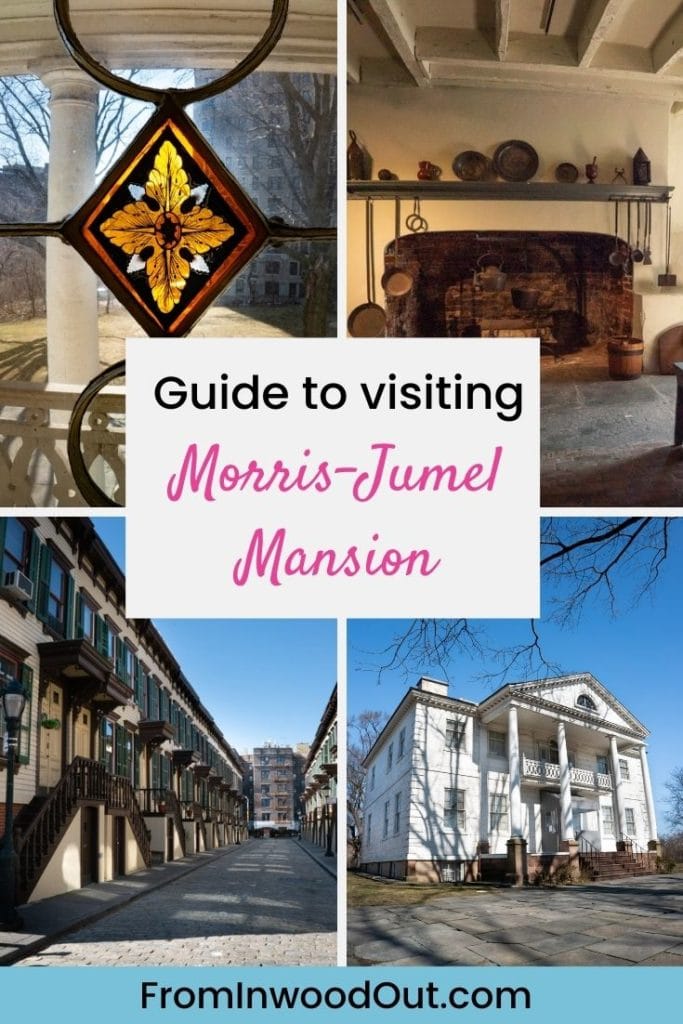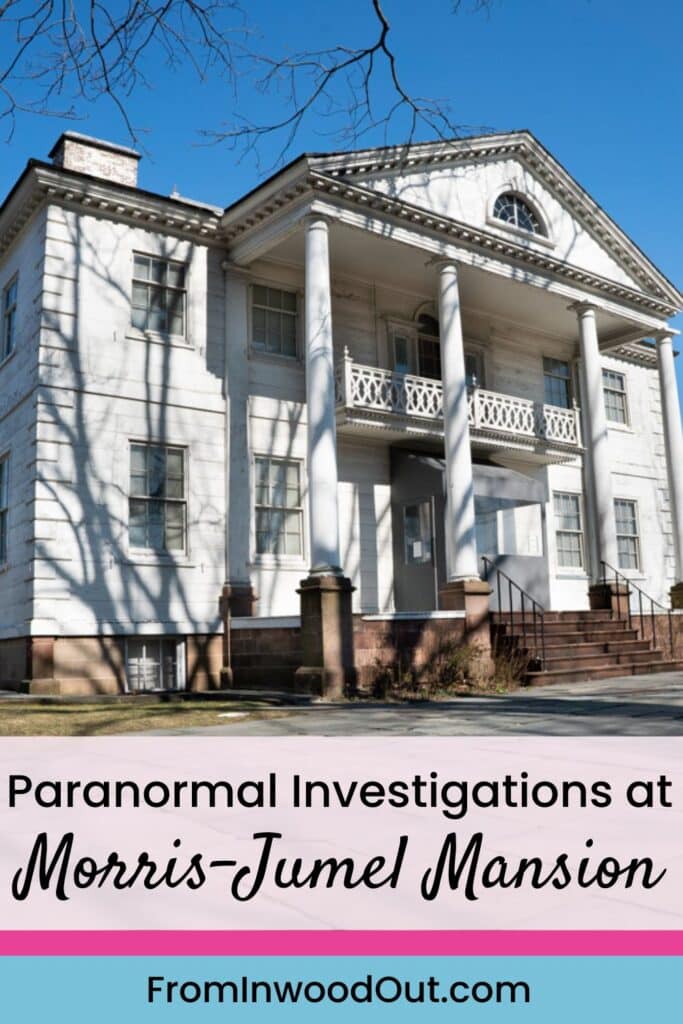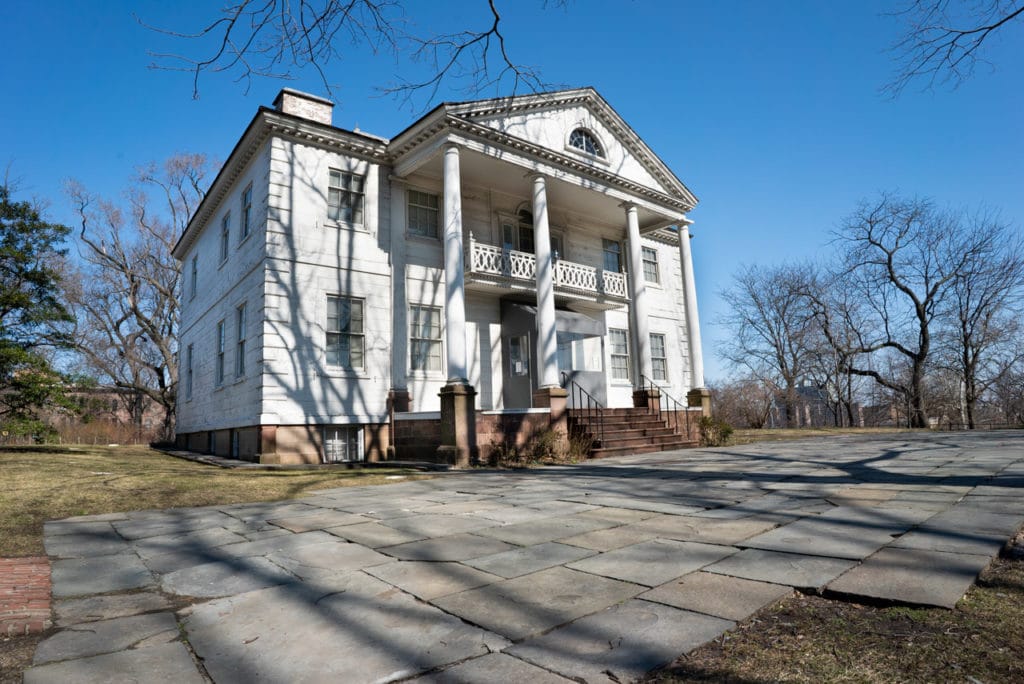
[Updated October 17, 2022] As the oldest house in Manhattan, Morris-Jumel Mansion has seen its share of struggles and triumph. Residents who were wealthy beyond imagination lived here as did the enslaved individuals they owned. A future president used the home as his battle headquarters and then years later, a former vice-president briefly resided here.
The person who has taken center stage, though, in the Manhattan mansion’s legacy is a woman by the name of Eliza Jumel. While she wasn’t the original owner, Eliza lived there for more than 50 years, giving her the title of the mansion’s longest resident. She was born into poverty in 1775 and when she died, she had amassed enough wealth—independent of her husbands—to have made her the richest woman in New York City.
Located in Washington Heights, Manhattan’s oldest house is now a historic house museum that’s open to the public. Visitors can tour the home and view period rooms on three stories, while learning more about Eliza Jumel, as well as other residents, visitors, servants, and enslaved people who lived there throughout the centuries.
It is also believed by many that ghostly presences remain on the property, something that’s been studied by several paranormal investigators.
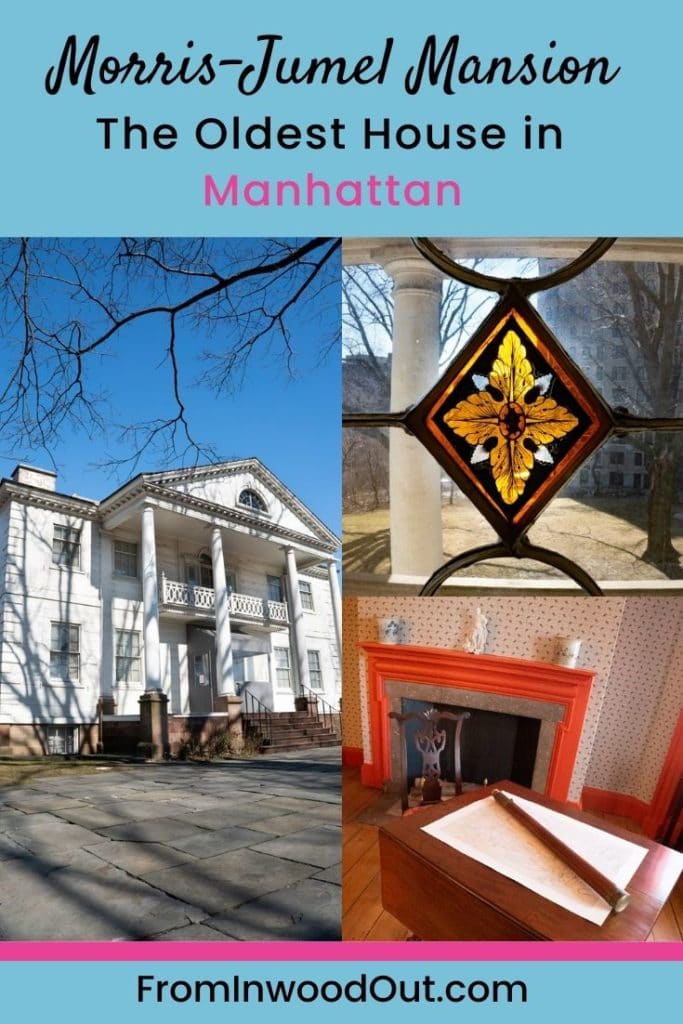
This historic house museum is appropriate for all ages and is a popular family-friendly destination. Read on for more details on Morris-Jumel Mansion history and the various ways to visit the house museum, including a tour where you can conduct your own paranormal investigation.
The Residents of Morris-Jumel Mansion
The mansion changed ownership several times over the decades. Here are some of the well-known occupants.
Colonel Roger Morris and Mary Philipse
Roger Morris, a Colonel in the British Army, built the mansion in 1765. When it was complete, it sat on the second highest point in Manhattan and stretched from the Harlem River to the Hudson River.
Taking up 135 acres of land and dotted with farm animals and fruit trees, the idyllic property was a summer home for Morris, his American heiress wife Mary Philipse, and their children.
Ultimately, the family only enjoyed “Mount Morris” for a decade. When the Revolutionary War began in 1775, Morris fled back to England. Mary, the children, and the enslaved people the family owned, retreated upstate to Philipse Manor Hall, Mary’s family estate in Yonkers, a home that remains there today.
George Washington
In the context of war, the mansion sat on a strategic piece of land, with unobstructed views of Manhattan from up high. For this reason, General George Washington, then commander of the Continental Army, used it as his headquarters from September-October 1776.
When Washington and his troops were later forced to abandon the property, the mansion and grounds were used as headquarters for the British and Hessian armies.
Washington did return to the mansion at least once. By 1790, the war was over, and he had been elected the nation’s first president. The mansion now operated as a tavern, and Washington dined here with his cabinet members, including John Adams, Aaron Burr, and Alexander Hamilton.
Eliza and Stephen Jumel
Stephen and Eliza Jumel purchased the home in 1810, launching another chapter of its legacy. Stephen was a wealthy French merchant. Eliza, who had been born into poverty, was a fiercely independent, self-taught businesswoman. By buying and selling downtown Manhattan properties, she increased the couple’s wealth and when her husband died in 1832, she was one of the richest—if not the richest—women in New York City.
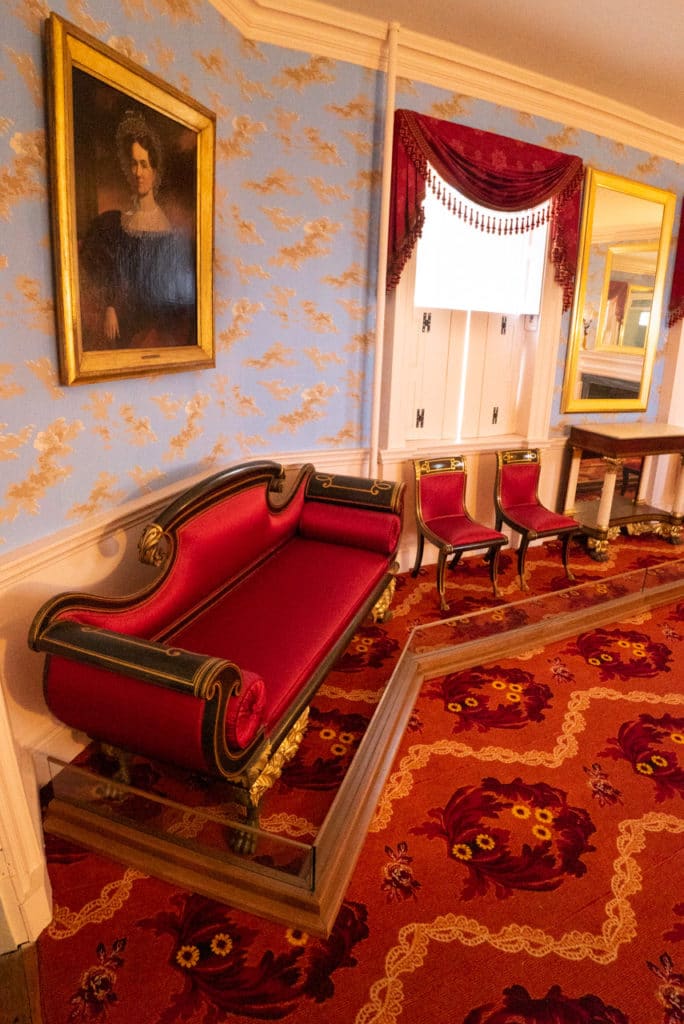
If you know anything about the era of the Gilded Age, you’ll recall that having the most money didn’t necessarily elevate one’s status in high society. Eliza had the misfortune to be born poor and was therefore not fully accepted by the established “old-money” families.
On a tour of the mansion, our guide told us this was perhaps why Eliza married Aaron Burr. As the former vice-president, Burr carried an elevated status that Eliza never would achieve, due to the circumstances of her birth.
That marriage was short-lived, with Eliza filing for divorce after only a few months.
Though a quick Google search might describe her first and foremost as “Aaron Burr’s wife,” Eliza’s husbands are the least of who she was and what she should be remembered for. She educated herself through avid reading and she negotiated high-end real estate deals. She was a generous woman who donated to charities and an avid art collector before that was the fashionable thing to do.
Enslaved People and Servants at Morris-Jumel Mansion
Similar to other New York City historic homes like the Dyckman Farmhouse Museum and the Van Cortlandt House Museum, Morris-Jumel Mansion is working to bring to the forefront the stories of the enslaved individuals and servants who worked in the home.
The mansion was built by the labor of slaves owned by Roger Morris and Mary Philipse. Later, George Washington’s enslaved valet, William Lee, resided there during Washington’s brief stay.
Our tour guide also told us that Ona Judge may have also been at the house. Judge was the subject of the excellent book, Never Caught, a true story that retells her life of slavery under George Washington, her eventual escape, and his relentless efforts to capture her.
Visitors will also learn about Anne Northup‘s tenure as Eliza’s servant. Anne was married to Solomon Northup, a free Black man who was captured and sold into slavery. He later wrote a memoir about his horrifying experience, which was turned into the movie, Twelve Years a Slave.
Eliza spent summers in Saratoga Springs, where Anne and Solomon were from, and when she learned of the family’s tragedy, she brought Anne and her two children back to New York City with her and employed them as servants. There’s no evidence that Eliza Jumel owned slaves.
Morris-Jumel Mansion Tours
The period rooms at Morris-Jumel house are furnished and decorated to represent various eras of the home’s history. Read on and choose the way you’d most like to tour the home. Before you visit, check with the museum for their current requirements regarding mask and COVID-19 vaccination requirements.
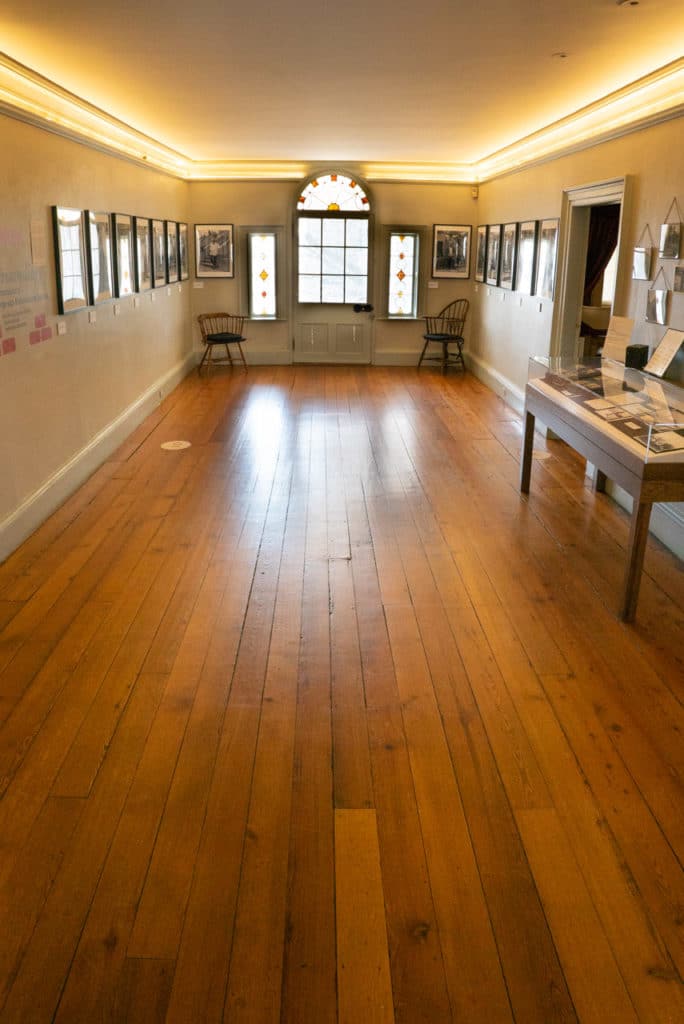
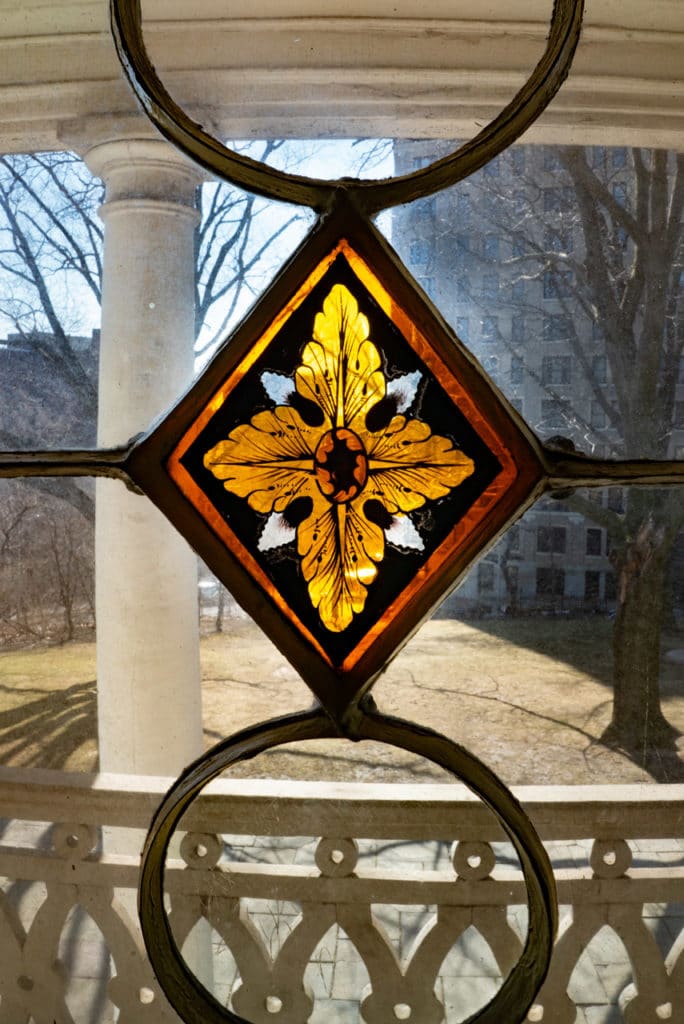
Self-guided Tour
Visitors can freely roam three stories of the mansion, reading informational panels to learn about the period rooms and the home’s residents. A lot of original furniture, decor, and glassware owned by past residents remains in the home, so most rooms are roped off at the entrance in order to protect these priceless relics.
- Admission: $10
- Hours: Friday-Sunday: hourly 12-4 p.m. Thursdays: 12-4 p.m. for Immunocompromised or High Risk Visitors.
Mansion & Grounds Exterior Tour
This tour begins on the outside the mansion, where a docent leads visitors on a tour of the grounds while telling stories of the mansion’s history and architecture, its residents, and the surrounding neighborhood. This is a good opportunity to ask questions and learn about/brush up on early American history. After the 45-minute docent-led tour, visitors can enter the mansion and do a self-guided tour.
- Admission: $16
- Hours: Saturday & Sunday: 11 a.m. Reservations required.
Special Events
The Morris-Jumel Mansion events calendar is packed with things to do, including art exhibits, tons of family-friendly activities, lectures, workshops for teachers, and special Family Day events. There are also virtual parlor chats for those who wish to attend an event from home. Prices and dates vary.
Paranormal Historical Investigations
Eliza Jumel died in her second-floor bedroom in 1865. At the age of 90, she was the home’s longest resident and in the years since the home has been open as a museum, visitors and museum staff have reported seeing a ghostly presence that some speculate is Eliza.
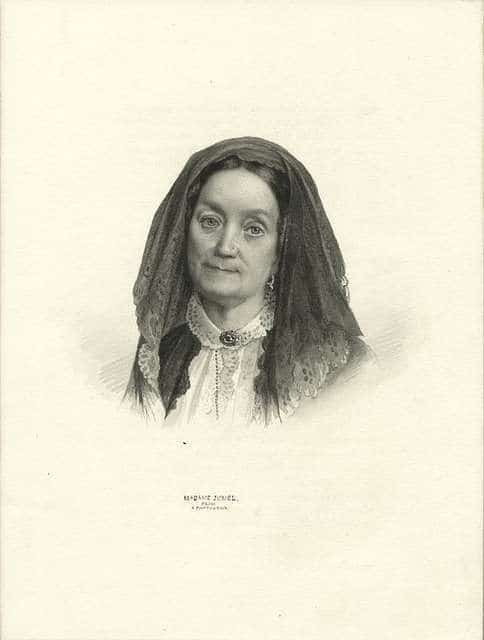
Other paranormal incidents have been reported, too. Shadowy figures mysteriously appear in photos taken in the home. Staff report odd smells like cigar smoke and body odor that’s associated with past residents. A group of school children were once admonished to be quiet by an elderly lady on the second floor. When the chaperone later apologized to a staff member for the disturbance, the staff member said there was no elderly lady in the house.
For anyone who wants to learn more about the home as a haunted attraction, Morris-Jumel Mansion hosts occasional paranormal tours. These tours are often theme-based. We attended a Women’s History Month Historical Paranormal Investigation.
I loved this experience. The tour was limited to only ten guests and our guides, one of whom was Meg Lynch, the Museum Operations Manager, had in-depth knowledge of the mansion’s history and its paranormal activity.
The guides wove together stories on ghost sightings that have been reported over the years with historical facts, making it interesting for believers and non-believers alike (and the tour guides allow a lot of room for skeptics!)
The high point of this tour was that were were allowed to enter the period rooms beyond the rope barriers that limit guests on regular self-guided tours. In those rooms, we got up close to priceless furniture, dishes, grandfather clocks, mirrors, and more that mostly belonged to Eliza Jumel.
The paranormal tour took place at night and the mansion was kept dimly lit as we wandered from room to room. At the beginning of the tour, each visitor was given a Magnetic Field Detector. This device is used by electricians to detect electrical sources. It’s a common tool used by paranormal investigators to detect magnetic fields that spirits might project, that are unobservable to the eye.
Our tour guides also placed electric cat balls strategically around the rooms and we could see them light up when any movement was detected.
In the end, we didn’t walk away from the tour with a firm belief in haunted houses but that wasn’t the point of the paranormal tour. More than anything, it was an opportunity to discuss the lives and deaths of the women, slaves, and servants, of the house and to take a small part in helping their memories live on.
Paranormal Historical Investigations at Morris-Jumel Mansion are special events and do not take place regularly like the other tours. If you’re interested, I recommend signing up for the wait list. Paranormal tours last 2.5 hours.
- Admission: $70 per person
- Ages 18 and over only.
Period Rooms at Morris-Jumel Mansion
Informational panels are placed at the entrance of each period room to tell visitors what they’re looking at. Some rooms in the mansion that are especially impressive include the following.
French Parlor (1825)
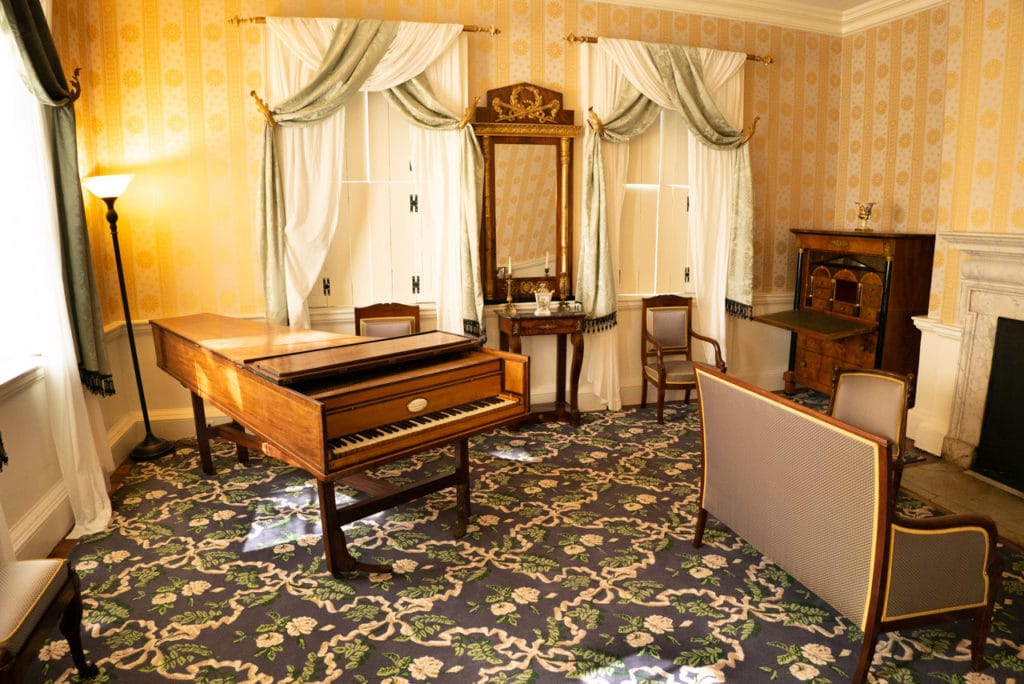
This is the first room guests will encounter upon entering the mansion. It’s furnished with many items Eliza purchased on her trips to France. This is also the room where she married Aaron Burr.
Octagon Room (1825)
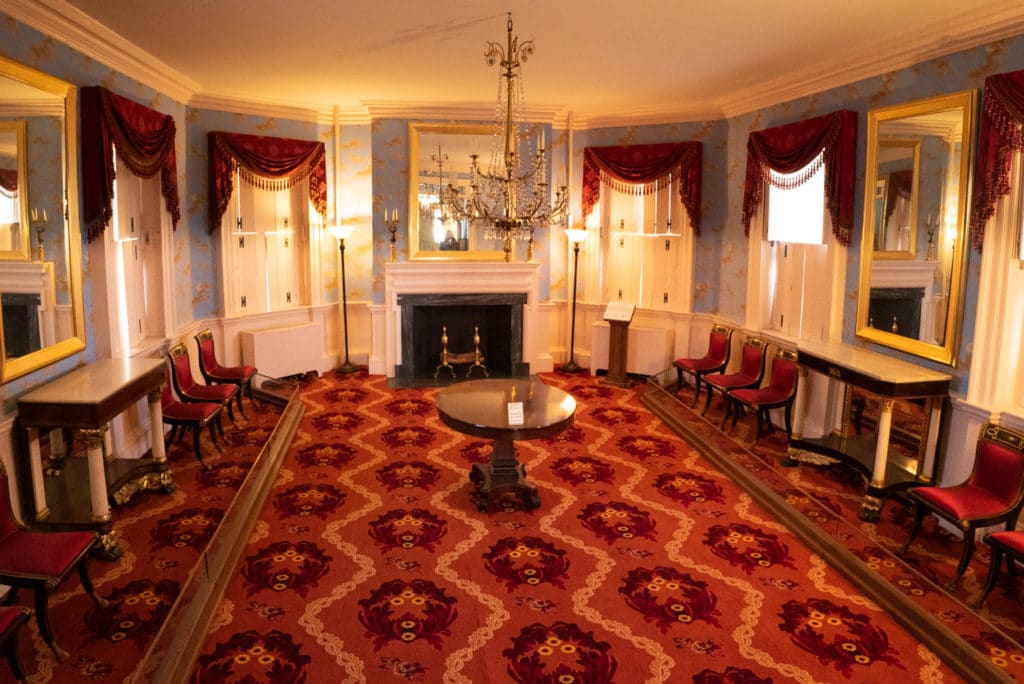
You can’t miss this ornate room, which is thought to be the first octagon-shaped room in the American colonies. The shape allows for more windows and more floor space and was probably designed after British architectural styles that were popular at the time the home was built.
Eighteenth Century Kitchen (1770)
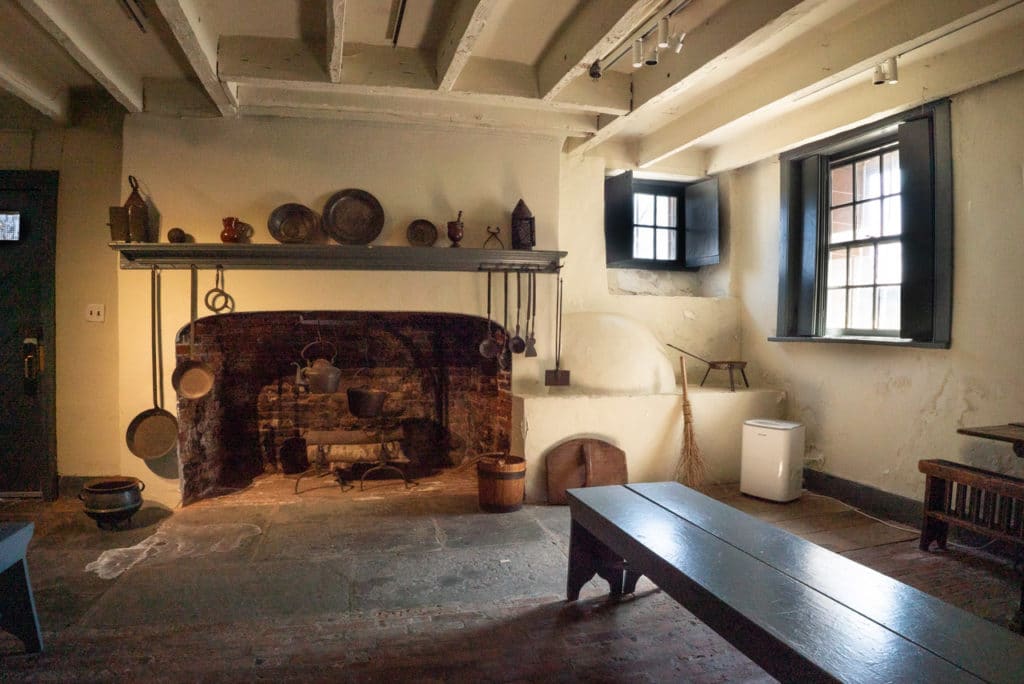
The basement kitchen, with its massive brick fireplace, is the one place where the home’s wealthy residents wouldn’t have spent much time. It is, however, where the enslaved people and servants would have spent much of their time, laboring away to make the lives of the wealthy homeowners more comfortable.
Eliza Jumel’s Bedchamber (1825)
Eliza’s bedroom is a highlight of the mansion. Located on the second floor, it’s decorated in the fashionable French Empire style, complete with an ornate mahogany sleigh bed. Eliza apparently liked to that select pieces of her furniture once belonged to Josephine Bonaparte, but on closer research, that has proven to be untrue.
Washington’s War Room (1776)
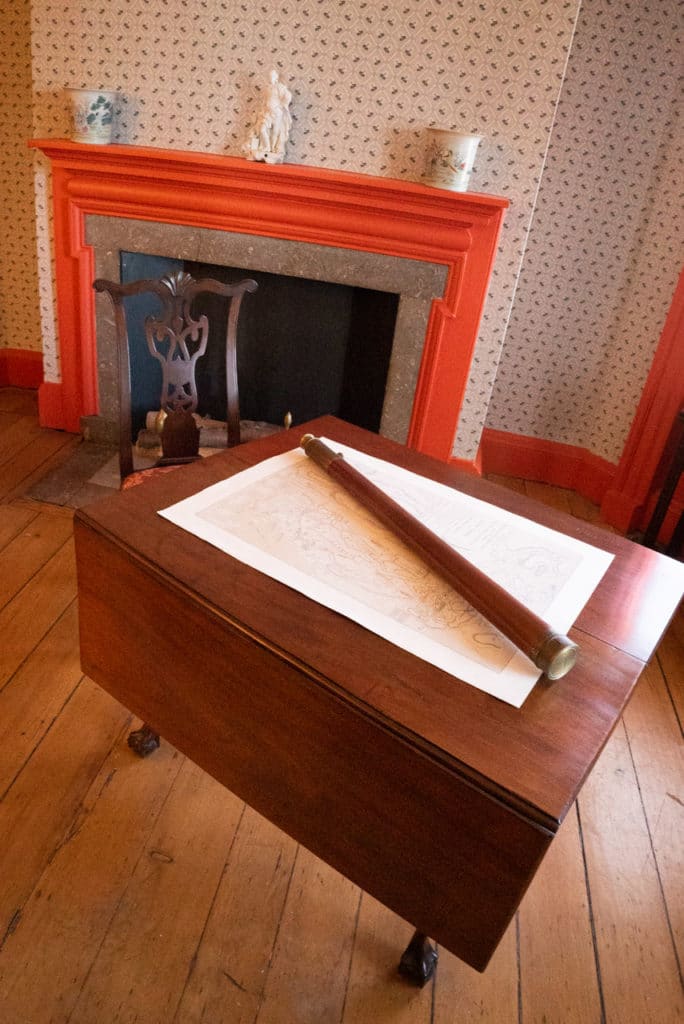
George Washington used this second-floor room as his war room. Its vivid persimmon-colored accents also make it a sight to see.
Things to do Near Morris-Jumel Mansion
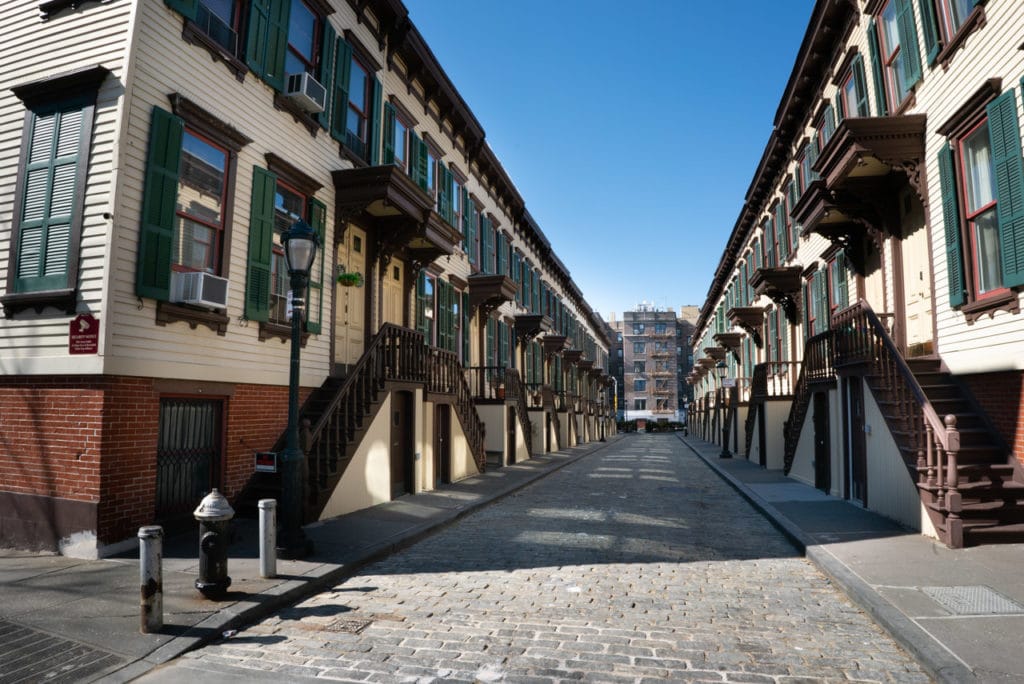
Listed on the National Register of Historic Places, Morris-Jumel Mansion is part of the Jumel Terrace Historic District. No matter which direction you approach from, it’s obvious this neighborhood is special. Visitors must enter the mansion grounds from Jumel Terrace, a cobblestone street lined with the elegant brownstone buildings that began to spring up in the late 19th century.
Morris-Jumel Mansion is located between 160th and 162nd Streets in Washington Heights, very close to where that neighborhood meets Harlem (which begins around 155th Street). In the early 20th century, this was a popular neighborhood during the Harlem Renaissance and many celebrities of the era had homes here.
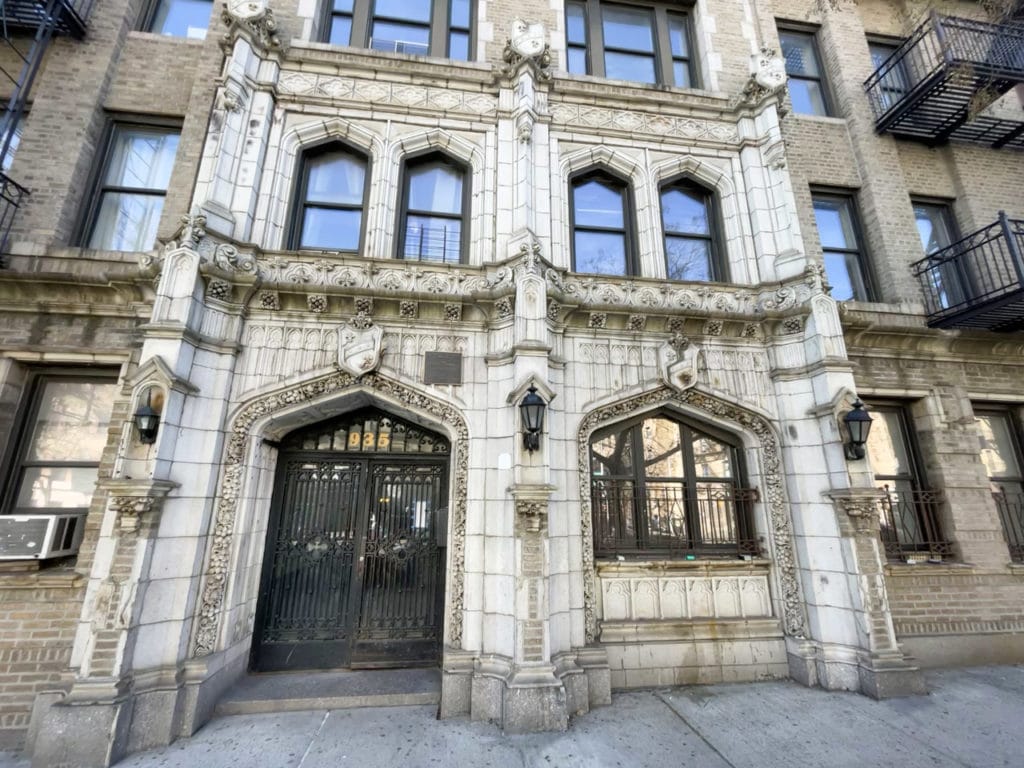
And Sylvan Terrace, which lies perpendicular to Jumel Terrace, is a residential street unlike any other in New York City, with its two rows of identical townhomes facing each other on a narrow brick road, and the grandeur of Morris-Jumel Mansion looming at the end of the block.
The story our guide told us was that the row houses on Sylvan Terrace were built originally for servants and by the 1960’s, had fallen into disrepair. When the Queen of England planned to visit the mansion in 1976 to commemorate the American Bicentennial, the city spruced up the homes and they’ve become among the most desirable properties in New York City.
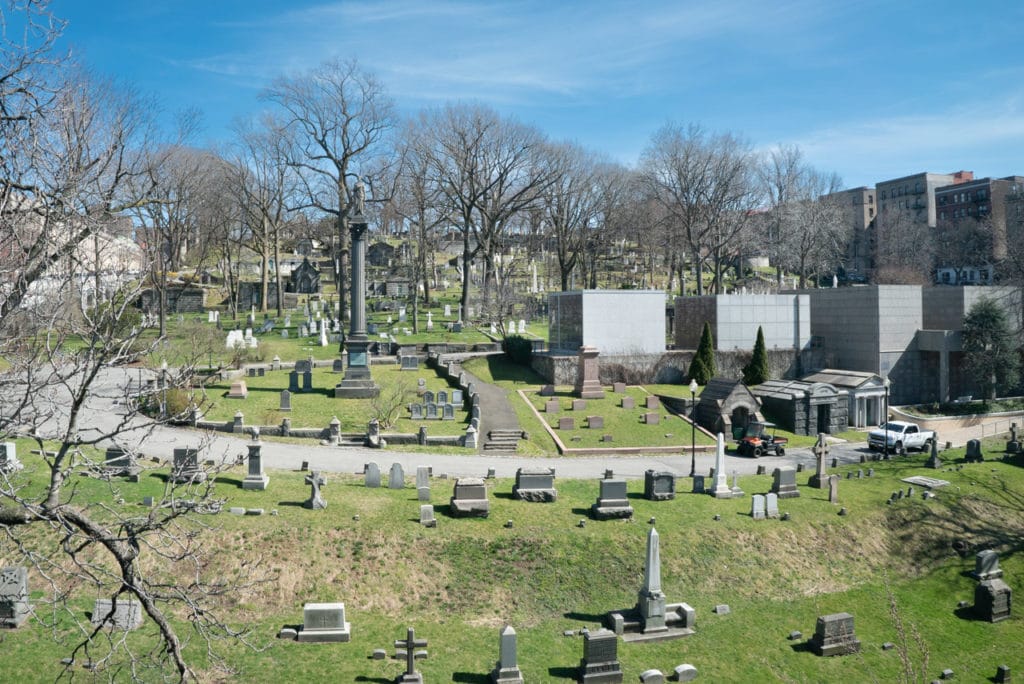
After visiting the oldest house in Manhattan and taking in the beauty of Jumel Terrace Historic District, keep circling outward to explore the greater neighborhood. The mansion offers a couple self-guided walking tours that lead to sites of historical interest in Black history and culture.
For example, an 1857 house that was part of the Underground Railroad still stands at 857 Riverside Drive. Former residences of famous Harlem Renaissance figures like Duke Ellington and Paul Robeson are on the route, as is Harry Belafonte’s home. Further north is the Audubon Ballroom, famous as the site where Malcolm X was assassinated in 1965.
Another nearby point of interest is Trinity Church Cemetery which is the final resting place for many well-known figures, including author Ralph Ellison. Eliza Jumel is also buried there.
For anyone interested in more colonial history, the Revolutionary War, or early American politics, be sure to visit Alexander Hamilton National Grange Memorial, the country estate Hamilton lived in with his family at the time he was killed by Aaron Burr.
How to Get to Morris-Jumel Mansion
Address: 65 Jumel Terrace, New York, NY 10032.
- Take the A train to 168th Street
- Take the 1 train to 157th Street
- Take the C train to 163rd Street
As a final note, visiting Morris-Jumel Mansion is a trip well worth your time, off the beaten path as it is. A mansion in New York City is not a typical sight, and this one offers some of the most intriguing historical information you’re likely to hear. When you visit, I highly recommend making a day of it and exploring this jewel of a neighborhood in Upper Manhattan.
Like this post? Pin and save for future reference!
